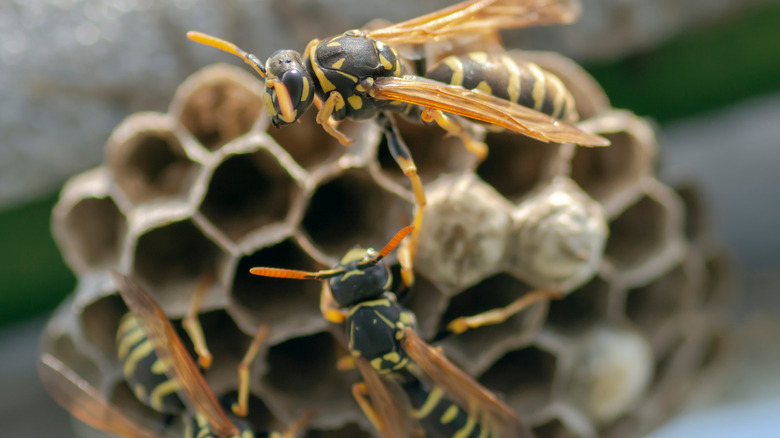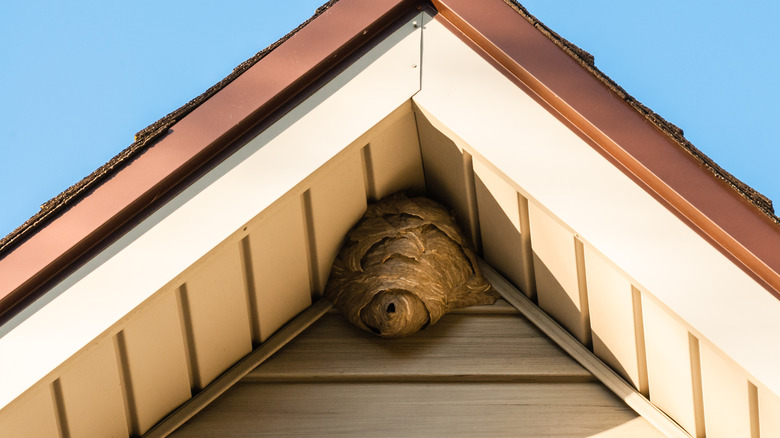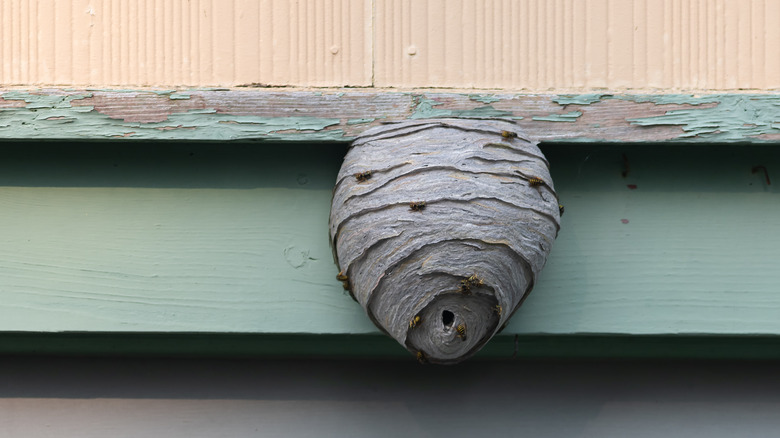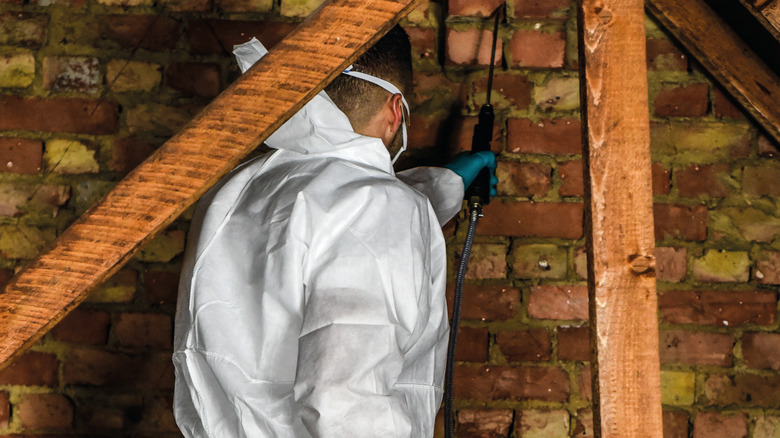An Expert Explains The Safest Way To Remove A Wasp's Nest From Your Home – Exclusive
Wasps play an important role within a healthy ecosystem because they act as pollinators just like bees and butterflies. They also consume insects such as aphids and caterpillars that could do damage to plants, says the Sustainability Times. Yet, wasps can also be dangerous, especially if they build a nest on your property. As territorial insects, they may try to sting people if they feel as though they're under attack, and for some, that could lead to a serious allergic reaction. In order to reduce these risks, it's always best to get rid of wasps and their nests.
When it comes to removal, calling in a pest control specialist to help you may be the first thing you think of. If you go this route, you'll know the professional is doing the job properly and safely, thus, protecting your family. However, the process may be a bit expensive, notes Fixr, with the average cost for wasp nest removal ranging from $325 to $450, depending on where you're located. Can you remove the nest yourself and skip that cost altogether? In an exclusive interview with House Digest, James P. McHale Jr., a Cornell University entomologist and President of JP McHale Pest Management, LLC, shares why he thinks you may be able to do so.
Understanding wasp nests
It's not always easy to spot a wasp's nest. You may find them on trees, in awnings, tucked into an eve on the roof or shed, or in other sheltered areas. Often, you may notice activity surrounding the nest with wasps moving into and out of it. However, McHale explains that, towards the end of summer and beginning of fall, this pattern of activity will change. "Queen wasps will drop below the leaf litter to overwinter," he says. "Remaining caste members will die off at the first frost."
If you're confident that has occurred and you do not see any activity near the wasp nest, you may be able to remove it. "Wasps do not re-purpose old nests," McHale continues. "Inactive nests can be removed without fear of being attacked." This perfect timing gives you the easiest opportunity to remove a nest without the possibility of being stung. But it's not always easy to be sure the wasps have evacuated, especially if you've only just stumbled upon the nest.
Find the entryway
It's not uncommon to notice insects flying around your yard before knowing where their nest is located. Follow them to find it, and if they go into the nest, you'll know you have what is called an active nest that requires a different removal approach. According to the Cornell University entomologist, "The most effective way to treat and remove an active wasp nest is to determine exactly where the entrance is. If they are in a wall void, sometimes the most effective way could be from the inside." If you can get close enough to look into and around the nest, this could be a first step in the process of safely removing it.
Before you rush in to tackle the project, consider your timing and supplies. "Either way, early evening or rainy days are when worker/soldier caste members are less active. A protective suit should always be worn to reduce risks associated with being stung," warns McHale.
Seal the deal
Killing off individual wasps as you see them isn't enough. McHale explains that killing the queen wasp is the key to effective control. "She is always in the nest when active," he notes. You don't have to find the queen, though, since you will be injecting wasp spray into the interior of the nest through the entryway. McHale advises using a registered product and following all instructions provided on the label. He says, "If the nest is in a wall void, treatment through the back may be required. Insulation can hinder the product's volatility. Dust or aerosol formations are the most common."
The hardest part is knowing whether you got them all or if you need to try again. To determine this, follow these tips noted by McHale. "If treatment is successful, all activity around the nest will ease in 24 hours. Non queen caste members will leave. If activity persists after 24 hours, the queen is still alive. You must adjust your approach." At this point, it may be necessary to call a professional to determine the best way to rid your home of the nest, especially if you have children or pets that access the area surrounding it.



